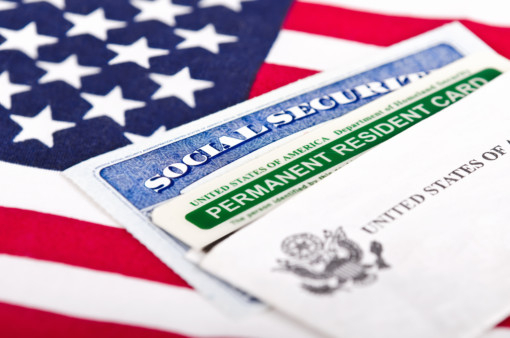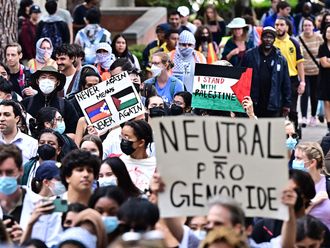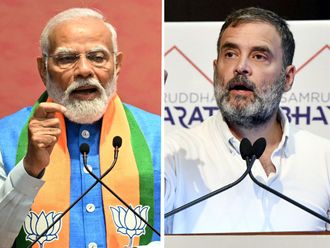
I came to America from India at age 23. That was in 1985, a golden age of immigration to this country. It didn’t feel like it, though, because it still took my husband, a medical physicist, and me a good seven years to trade up from our student visas for an H-1B for him and an H-4 spouse visa for me. Eventually we got the ultimate prize: Green cards — which, to our amusement, weren’t even green back then.
In the decades since, wait times for green cards for Indian techies have become impossibly long, with particularly unfortunate consequences for H-4 spouses who want to work. And United States President Donald Trump is now poised to undo a 2015 Barack Obama-era regulation that took a small stab at addressing their plight.
An H-1B, which is primarily reserved for high-tech talent, allowed my now ex-husband to accept a job at a Detroit cancer hospital. But my H-4 barred me from working, even though I already had several years of journalism experience along with a degree in Biology and Chemistry. I had to wait another two years for my green card before I got the legal right to earn a living.
Putting my career on hold until I was 30 was frustrating, especially since we had a baby to support. But Indian spouses on H-4s — well over 90 per cent of them women — who came after me envy my experience.
When I arrived, the wait times for green cards for Indian H-1Bs averaged about four years. But over the next several decades, the wait steadily grew. By 2005, it was more like 10 to 15 years. Today, according to the National Foundation for American Policy, a non-partisan research outfit, Indian H-1Bs can expect to stand in the green card queue for several decades.
This happened because in 1990, Congress imposed an annual limit on employment-based green cards that was far too low for America’s growing economy. This was on top of the overall green card cap and country-specific quotas. With the informtion technology revolution taking off and Silicon Valley aggressively recruiting Indians on H-1Bs, the timing of this third blow couldn’t have been more inopportune.
The upshot is that Indians who’ve applied for their H-1B in the past six years may end up retiring before seeing their green cards. And their spouses may have to abandon hope of ever working in America unless they can get their own H-1B.
That was never easy. These visas have always been in short supply. Over the past six years, they’ve been running out within the first week after the government starts accepting applications. It also means finding an employer in the same town as your husband that is willing to hire and sponsor you despite the cost and the uncertainty involved. That’s why Indian women plaintively refer to the H-4 as an “involuntary housewife visa”.
Late in his term, after it became clear that comprehensive immigration reform wasn’t going anywhere, former US president Barack Obama issued a regulation giving 100,000 H-4 spouses work authorisation so long as their husbands had scaled all the bureaucratic hurdles — like obtaining labour certification — and filed a completed green card application, which still takes a year. This was a huge boon to Indian spouses, who eagerly applied, landing about 93 per cent of the authorisations.
But an anti-immigration outfit called Save Jobs USA sued the Obama administration, claiming that work authorisation for H-1B spouses meant that the US would end up “importing” two foreign workers for every one. Instead of defending the regulation in court, the Trump administration has decided, come June, to scrap it to advance its “Buy American, Hire American” agenda. Although there is nothing official yet, once the regulatory process is completed, the government may stop handing out new authorisations or renewing existing ones when they expire.
Restrictionists assume a zero-sum math for workers: A job gain for a foreigner is a job loss for an American. By that logic every college graduate who enters the job market would be cause for mourning. But that’s backward, given that skilled individuals create, not take away, jobs, and no economy succeeds by shackling qualified people.
These women are qualified because educated people tend to marry other educated people. The majority of H-4 women have college degrees, according to a 2014 survey by blogger Rashi Bhatnagar, herself an H-4 visa holder. They also happen to be between the ages of 26 and 35 — peak productive years. It would be far better for the economy to accommodate their ambitions and turn them into productive, taxpaying individuals.
Not letting them do so is a personal tragedy for them. But it also turns the restrictionist worry that immigrants today prefer to live transnational lives rather than assimilate into a self-fulfilling prophecy. A job is not just income. It is also an assimilation programme because it offers an entry into a new culture and a chance to form new friendships.
Because getting a green card took only a few years when I came, I, like many other spouses in my situation, used that time to obtain a graduate degree and build skills in preparation for entering the job market. However, what would be the point of investing that kind of time and effort in an advanced degree if there is so little certainty that it would actually offer a return one day? Many H-4 wives I know end up staying at home, Skyping with friends and family back home to escape the boredom and isolation of being confined to a “gilded cage” — their description of their life in America.
I remember feeling an exhilarating world of opportunities open up before me when I got my green card. It is sad — and senseless — that Trump is so determined to prevent others like me from experiencing the full promise of America and participating fully in American life.
— New York Times News Service
Shikha Dalmia is a columnist and senior policy analyst.










